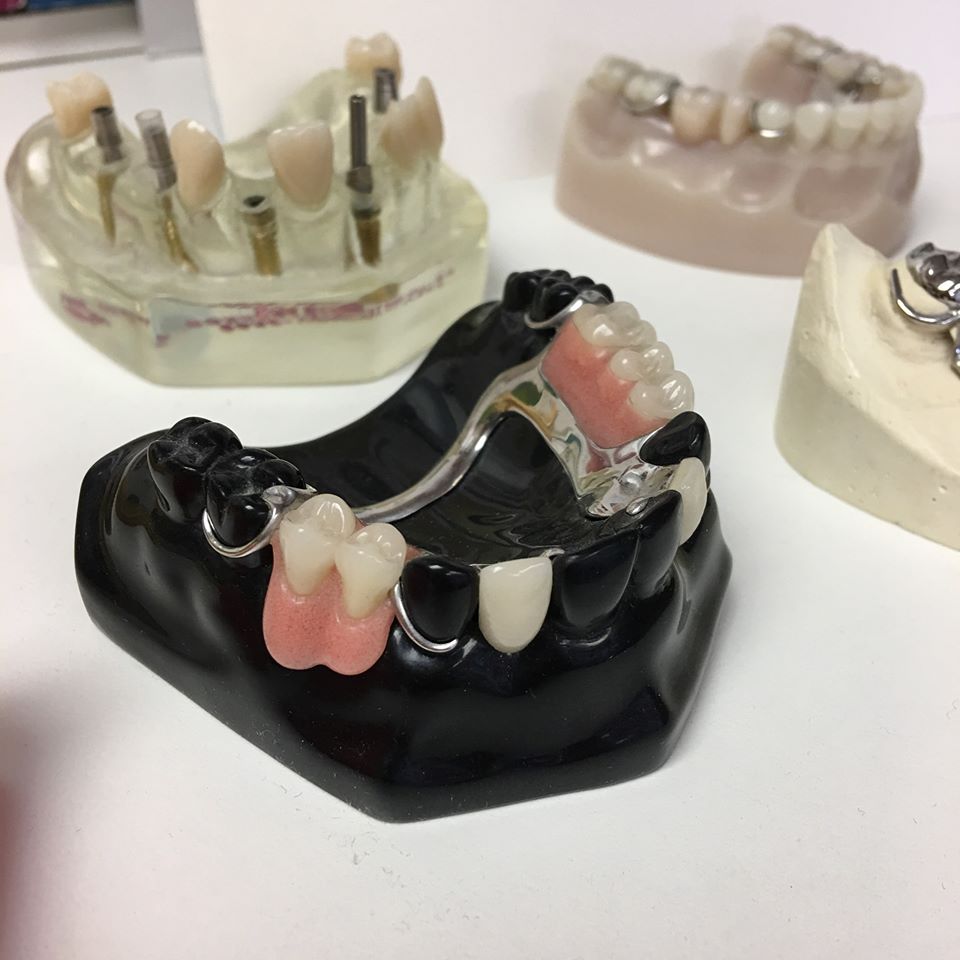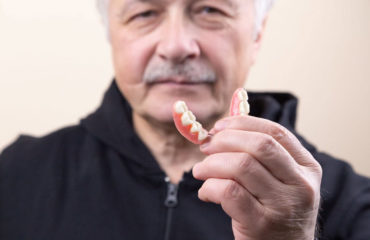Dentures are removable fixtures that are suitable to those who have issues with regard to missing teeth and also the surrounding tissues. There are basically two types of dentures available, partial and complete. When we talk about complete denture we are referring to a situation where all the teeth are missing. On the other hand, partial dentures problems occur when some natural teeth still continue to remain in place. There is a need to understand the basic difference between the two so that we can find out more about the complete denture steps that should be gone through. We would like to mention our readers that we are a denturist based in Calgary, Alberta.
We will have a look at the different types of complete dentures so that our readers and also prospective customers can have a reasonably good understanding about complete dentures cost and also the possible problems and complications associated with it.
Complete Dentures
When we talk about complete dentures, we can categorize it into two major sections. They are either immediate or conventional. This procedure is done when the damaged teeth have been completely removed. The gum tissue is also allowed to heal completely and only then the procedure of complete denture is gone through. This also is referred to as full mouth extraction for complete dentures or complete overdenture process. The process of complete denture is quite long-drawn and it takes around 12 weeks after the teeth extraction is complete. Hence, when complete dentures cost has to be established, we have to take the above factors into account.
Different Types Of Complete Dentures
There are different types of complete dentures and each one of them has its own uniqueness and specialties.
Flexible Complete Denture: This is quite common amongst those who need a complete denture because of loss of their entire set of teeth. However, there is a difference between fixed complete denture and flexible complete denture. The latter could be defined as partial in nature. The materials that are used for this type of dentures are different. Almost all flexible complete dentures are made with the use of a thin thermoplastic material. There are a few alternatives that could be used as materials. It could be nylon, or even acrylic. However, nylon is preferred because acrylic is rigid and thicker and therefore may not be suitable for all teeth, tissues and gums.
Fixed Complete Denture: On the other hand when we talk about complete dentures that are fixed in nature, we are looking at something more permanent and perhaps more complicated. The materials that are used for fixed complete dentures are also different compared to the flexible ones. All the teeth of a particular jaw are totally replaced and even the associated structures of the jaw are also replaced. Hence, this is often considered to be complicated. A fixed complete denture is also expensive and therefore when estimating the complete dentures cost the same has to be taken into account. Only selected dentists having the right experience and expertise, experience and infrastructure would be in a position to handle this. Hence, while we could afford to take things a bit easy as far as flexible complete denture is concerned, the same is not the case as far as fixed complete denture process is concerned.
Complete Overdenture
Complete overdenture is a procedure that covers one or more teeth. It also is a lengthy procedure that calls for preparation of implants and roots. This is usually done for elderly patients and it quite a bit different from flexible complete denture. It is suitable for elderly patients who may have lost a few teeth but not all. This makes them perfectly suited for a complete set of dentures. One more feature of complete denture is that it is not rigid in the mouth. In other words, it can be removed as and when required by the users. We should also understand the difference between dentures and complete denture or overdenture. Those who go in for dentures often face a few problems. They experience significant bone loss in their jaws. Further, when a person opts for complete denture or overdenture, he or she can take out the same for cleaning. On the other hand, normal dentures are permanent and fixed in nature and cannot be taken out of the mouth even for a few minutes. In other words, they are fixed to the jaw.
Steps For Complete Dentures
We are listing down some commonly followed steps when it comes to complete dentures. We need to understand clearly that the process of having new dentures does not happen till such time all the teeth are removed. Dentures also mean false teeth. False teeth cannot be placed if the original teeth remain intact. Hence, the first step is to ensure that the teeth, gums and the adjoining tissues are completely removed.
The first step is to take an accurate impression of the teeth so that the right diagnostic casts can be made. This is followed by placing of wax rims in the mouth. This is done to ensure proper bite. This is followed by extractions of the teeth. This is done under topical or local anesthesia. Sutures are also placed, wherever necessary and immediate dentures are placed in the mouth. After around 24 to 48 hours the patient is called again for minor adjustments should they be required. After seven to ten days following the extractions and placement of immediate dentures, the sutures are removed and the permanent or complete dentures are placed. This is also the time where steps are taken to eliminate any sore spots.
Understanding Partial Dentures
Partial denture is called by that name because it is removable. However, when you get the right removable partial denture done by the right denturist, it will be quite natural-looking. It could help in restoring the function and form of the jaw. It is useful for replacing either a single tooth or several missing teeth. There are different types of removable partial dentures. The types are so defined because of the procedures used and also the materials that are used. In most cases, the materials could be high quality molded plastic or acrylic or even a combination of metal and acrylic. This goes a long way in giving strength to handle the needs as far as speaking and chewing are concerned. Acrylic partial dentures might be cost-effective, but when it comes to quality and longevity, they leave quite a bit to be desired. You should not go in for this type of dentures unless your dentist recommends it. We would strongly urge our readers to be sure that they have a reasonably good understanding between partial and complete dentures before going in for it.
When are Partial Dentures Needed And Why?
The bite pressures in the mouth shift quite a bit when you have one or more missing teeth. This leads to other teeth beginning to move in order to compensate for the gap left behind in your bite. This also could lead to shrinking of the soft tissues and also the supporting ones around the missing teeth. While it could lead to change in the overall physical appearance of the teeth and gums, it also could result in other complications. Hence, we recommend a partial denture procedure for keeping the gums, facial muscles, jawbone, etc engaged and active. It also stops further shifting of other teeth in the mouth. At the same time, you also can expect to have a complete and beautiful smile. It would also be pertinent to mention that there are different procedures for partial dentures for back teeth and also partial dentures bottom front teeth.
This procedure is simpler and less-invasive. Hence if you are looking for an affordable partial dentures cost , then this could be the best option. However, you must be aware that this denture-procedure requires regular maintenance. When evaluating the overall cost, the cost of maintenance, regular visits to dentists and other such things should always be taken into account.
We also recommend daily cleaning of the partial denture but this is simple. It will help keep the gums healthy and you will also ensure the best of looks as far as your teeth and gums are concerned. We also can assure that if there is a need for expanding the partial dentures, this can also be done provided it is done under the right care and guidance and with suitable infrastructure and tools.
What About Eating With Partial Dentures?
Yes, this is a common question that comes to the minds of our customers. How easy or difficult is eating with partial dentures? We would like to assure our readers that quality partial dentures are designed and implemented in a professional way. This will ensure that the normal function and form of natural teeth is protected fully. Hence, normal eating should not be a major problem. It might take a few days for the users to get adjusted to the newly implanted partial denture. Over a period of time, the customers will be able to enjoy almost all types of food that are dear to them.
However, as experienced professionals, we recommend that it would be ideal to get started with soft foods and then move to harder foods. We also suggest that the customers should take care while eating. The chewing process should be slow on both sides of the mouth. We also strongly suggest that you should avoid sticky and hard foods as much as possible.
Is Sleeping A Problem?
Though sleeping with partial dentures is quite safe, we recommend that might not be the right thing to do. There are a few reasons for this. Partial dentures have been designed uniquely and they should be cleaned outside the mouth. During sleep, food particles tend to decompose and they get lodged between the crevices of the partial dentures. Cleaning becomes a problem in the morning and hence it would be better to have them off before sleeping.




